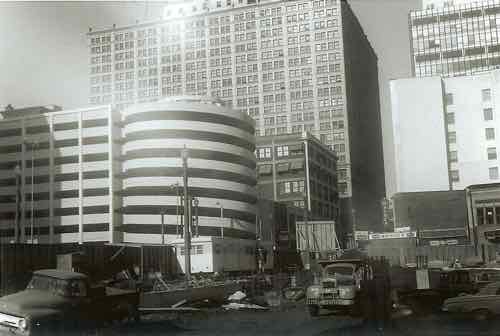Do People Still Care About Public Health?
|
|
It was a scene right out of a made-for-TV disaster film at the Creve Coeur Safety Fair held in mid-October on the campus of Barnes-Jewish West County Hospital. There were emergency services, helicopters buzzing overhead doing maneuvers, fire engines and fake rescues.
The real sense of urgency, however, was in the flu-shot lines just to the east of the accident re-enactors and general hoopla. There were a couple thousand people hurrying as fast as they could to stand in lines that wrapped around two large parking lots. Frantic drivers parked their cards anywhere they could and pushed children and elderly parents toward the line. Everyone wanted to get in place before the cops shut it down and turned people away. A four-hour event, the line was stopped a half hour after opening because the line already exceeded the supply of 2,000 flu vaccines.
Then we had time to wait. And wait. As the line finally crept forward and two hours slowly ticked by I couldn’t help but think that in case of a real emergency we’re in more trouble than we know. All around us there were stories of doctor’s offices that had no vaccine or pediatricians who had run out of the vaccine for infants. Rumors of cancelled flu shot clinics were verified. The next day Walgreens ran out of flu vaccine. And this was only for the seasonal flu vaccine, not the H1N1 vaccine.
So what happens if that tinge of panic becomes full scale, out-and-out panic? It doesn’t take much of an imagination to see all that anxiety transformed into something much worse.
I can’t speak for the state of public-health planning, but when a corporate citizen like BJC Healthcare distributes in excess of 30,000 free seasonal flu shots and they run out in the midst of a final mob scene, what does that say about the state of our public health? I say it means we’re failing.
While there were doubtless some freeloaders in the bunch, I’d guess many people were in the line because they were unemployed, uninsured, underinsured, very young, very old, or simply couldn’t afford the cost of immunizing their entire family. At $25 a shot, a family of six would have to invest $150 to protect themselves from just one of the serious flu threats this year. No word on how much the H1N1 vaccine will cost, but it if it’s the same, that’s $300 to inoculate a family in 2009.
The most effective public health measures are preventative. Wash your hands. Stay home if you’re sick. Don’t send sick kids to school. Get vaccinated against the evils we know. Yet how many of us who live in an interdependent way in urban or suburban environments take these precautions? We all know people who pride themselves on never taking a sick day or the fearful among us who refuse to get vaccinated. To quote Walt Kelly’s Pogo, “We have met the enemy and he is us.”
Urban life is intimately tied up with public health. We depend upon vaccinations, the county health departments that allocate them, and the generosity of corporate sponsors to fulfill the needs of those with substandard or no health insurance coverage. Our illogical and haphazard delivery of disease-prevention services undermines civic health.
So when I look at public investments in the community, I wonder why public health is never mentioned. We fund safety improvements to the MLK Bridge to the tune of $1.4 million to address 14 fatalities since 1998. And yet 84 people have already died in Missouri this fall (through Oct. 10) due to flu or complications of flu and 1,441 new cases of flu (seasonal and H1N1) were reported in Missouri during the week of Oct. 3-10.
I’m not saying the MLK Bridge project is frivolous, but perhaps the civic cost of not investing in disease prevention is more than short sighted, it’s a tragic loss of focus on what is most likely to protect the lives of ordinary Missourians.
While you mull on that, you might also consider that the majority of our local and regional flu pandemic planning is based on 2006 models for the avian flu. I don’t know about you, but I’d like to rethink public road investments and other “high priority” public-improvement projects and think more about public health and what will really make our communities safer and healthier.
Disclaimer: Yes, this writer belongs to the millions of the underinsured even though she pays significant amounts of money monthly to keep her healthcare coverage current. Individual health coverage often neglects simple preventative services like flu shots while maximizing out-of-pocket expenses. So, yes, I did need that free flu shot.
– Deborah Moulton

